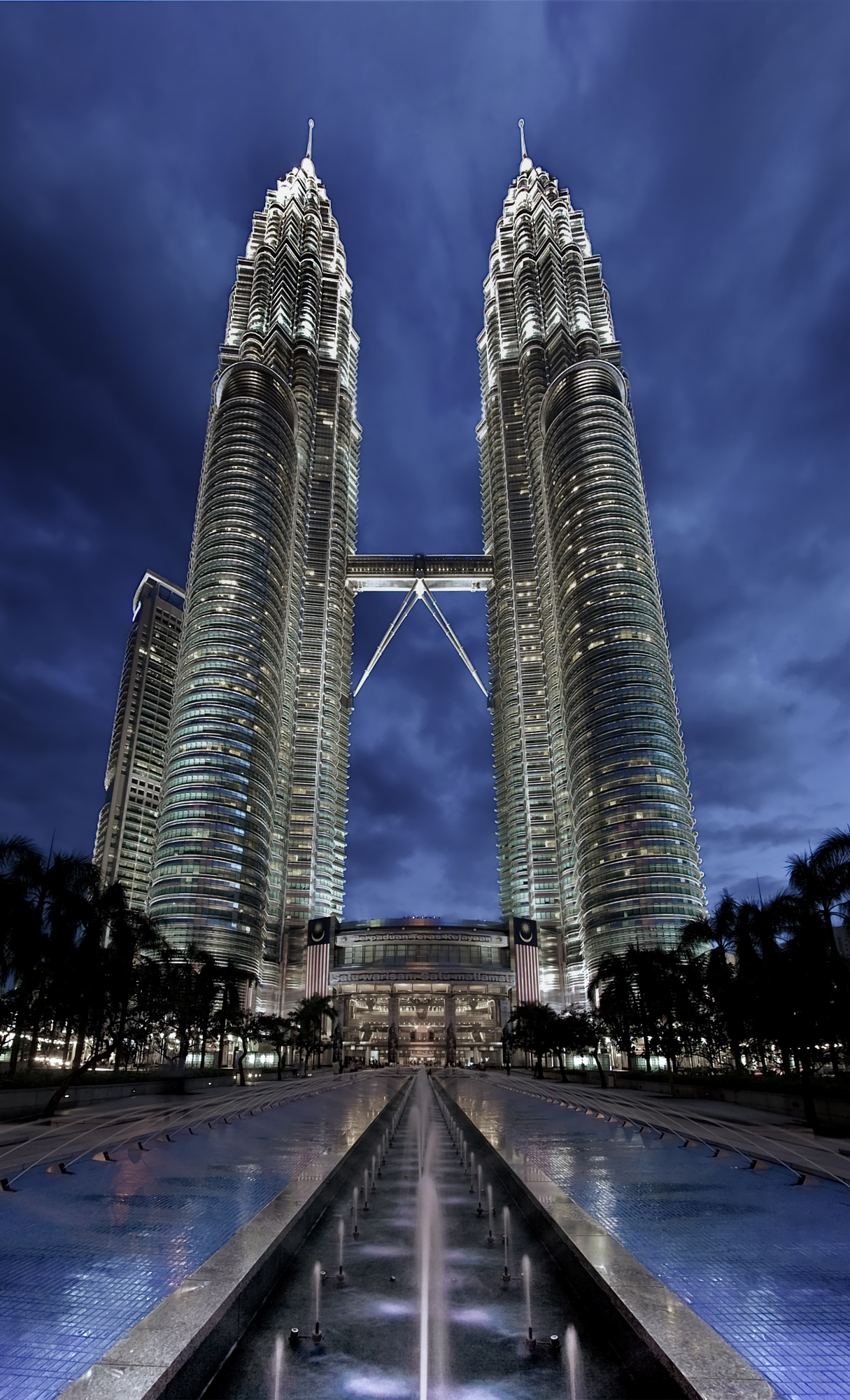六日目(9月23日)
今日と明日はマラッカのことを教えさせていただきます。今日は、体調ちょっと崩したようだけど、頑張る!家殻出る予定は朝9時だったけど、皆寝坊しちゃったし、いろんな事情が当て、12時に家から出発した。マラッカ中央まで約30十分。こういう時は、ナビがあるので、助かった。最初の行き先は MUZIUM SAMUDERA (海上博物館)。この博物館は中世時代のポルトガルの旗艦、FLOR DE LA MAR のレプリカです。この船の高さは34m、幅 8m 、長さ36m。この博物館はマラッカ川にあって、その近くにあるマレーシア海軍博物館と MUZIUM SAMUDERA 2 (MUZIUM SAMUDERA の隣)の三つもの博物館の共通券で入場できる。全ての営業時間は毎日0900時から1700時までです。大人はRM 3.00、子供は RM1.00。この博物館のテーマは昔のマラッカ時代の黄金時代、そしてポルトガルがマラッカに来た後の時代など、ほとんどここに展示されている。歴史が好きな方はいらっしゃい!まぁ、マレーシアの歴史だからたぶんさっぱり分からないことが多いかもしれないけど、この船はマレーシア人にとってはとても深い意味を持つんだ。日本の場合には、1853年7月14日に、「黒船」が始めて現れて、日米関係が始めた。マレーシアの場合では、ポルトガルの太守、VASCO DA GAMA (VDM)(ヴァスコ・ダ・ガマ)が艦隊とともに始めてマラッカに来た。最初はマラッカ政府との貿易協定のためにマラッカスルタン(王)を訪ねた。その時、ジャワとグジャラートからの商人は、ポルトガルの本当の目的は、キリスト教を広める為だと、マラッカスルタンに報告した(あの時は、マラッカが東南アジアのイスラム教の中心だった)。このニュースがスルタンの耳に来て、すぐそのポルトガルの代表を逮捕した。ポルトガルはその時商売の許可だけではなく、軍隊の基地まで要求した。その要求を断られたので、VDM はマラッカに攻撃をした。そのの攻撃先頭は、FLOR DE LA MAR だった。二回目の攻撃でマラッカはポルトガルに負けて、昔のマレーシアの初めての殖民だった。次の博物館は特に面白いものはないが、魚の種類や海洋のことに興味があれば行けばいい。
FLOR DE LA MAR(色は確かに黒だな!)
はぁい、歴史の授業はここまでで~す。
昼食は友達の実家で。じつは、その時、初めて彼の実家へ訪問した。作っていただいたマラッカ料理はやっぱ辛い。ほんっっとう辛い!でもその時は、彼のお母さんが手加減して、少し甘くした。にもかかわらず、日本人お友達はすげぇ汗かいたんだ。。。まぁ、あれも海外旅行のスパイスとも言えるかなぁ~
夜には、MALACCA RIVER CRUISE をやった。ボートは30-45分毎に出稿する。桟橋はスタダイスビルの近くで、警察署の向こうにある。乗船券は大人:RM 10 、子供:RM 5。トリップは約30-40分で、マラッカの古い橋、伝統の家、博物館など。このクルーズは夜にやったほうがおすすめです。k川岸に並べてあるビルは点灯され、雨のない日には絶好です。なぜかというと、僕達が行った時に、雨だった!大雨じゃなかったから、よかった。
昼、MALACCA RIVER CRUISE の桟橋
ボートから見える水車
帰る前に、スタダイスのビルの前に集合写真は忘れないで!
雨の中であろうが、なんであろうが。。。
その周り (あれはベチャです - 三輪自転車)
教はマラッカで最後の日だった。今日は金曜日。ムスリムの特別の日です。昼にモスクへ行って、集会礼拝をやった。ということで、家から12時にぐらい出発してマラッカ中央まで約40分かかった。昼は暑い。北海道の涼しさになれた僕も、久々のマレーシアの気温はやっぱたえられなかった~ ~なんって。よるは、マレーシア人の友達の家族と一緒に夕食をした。その場所は、PORTUGUESE SQUARE です。PORTUGUESE SQUARE とは、ポルトガル人の定住で、ここにいる人達は昔のポルトガル人の数十世代の子孫です。マレー人、インド人と結婚して、ここに暮らし続けていた KRISTANG (クリスタン)の人達しです。PORTUGUESE SQUARE はマラッカ中央から約20分運転です。ここではマラッカの名所の一つであるが、ポルトガル人の文化ダンスとかは普段やっていない。っていうか、ここに来ている人達はほとんどポルトガル料理を食べにきたっていう理由で来た。このレストランは海に向いているので、食事の後は桟橋に散歩でもすればいい気持ち~ぃぃ。
詳しい情報と写真などはこちら(英語)!
七日目(9月24日)
午後5時ぐらい、マレーシアの友達が抜けられない事情があったので、途中で分かれた。ということは、僕たち5人車に詰めて、またクアラルンプールに戻った。5人分の荷物 +5人の体重 =重くて、車があまりスピードだせなかったけど、なんとなく無事でクアラルンプールまで着いた。彼らはまた同じホテルに泊まった。明日は、僕達の先輩の結婚式なので、今日は本当疲れたんで、おやすみ~~ (-o-)Zzzz
八日目(9月25日)
今日は4年生の先輩の結婚式へ行った!今日はいい日になたはずなのに、僕が交通事故に巻き込まれちゃって、気分悪くなっちゃった(ったく!)。日曜日なので渋滞に巻き込まれた。車がすっげぇ多かった。一瞬間でもぼっとしちゃうと、大変なことになった!まぁ、怪我もしていないし、(相手の車の弁償だけは。。。)、終わったら一旦家に帰った。するととく考えてみると、こんな日は二度と来ないから、やっぱり結婚式行かなきゃ!
結婚式にチェンドルというマレーシアのデザートを日本人の友達に味わってもらった。旨いんだって。。マレーシアで「かき氷」のことを「アイスチェンドル」もしくは、「アイスカッチャン」と呼びます。チェンドルとはマラッカ名物の緑色のゼリーのようなモノ。カッチャンとはマレー語で「豆」。つまりアズキ(紅豆)を意味します。お椀に、チェンドルやアズキなどの具を入れ、シャカシャカと氷を削って山盛りに。ココナッツミルクにグラ・マラッカと呼ばれる黒糖シロップをかけたら出来上がり。地元の人はシャビシャビに混ぜ合わせて食べてマス。「かき氷」だから、飲み物じゃない!。氷とシロップをスプーンで削りすくって食べる。どんな食べ方をしても美味けりゃOK!スタイルを気にせず涼食を楽しみましょう。グラマラッカとはマラッカ名物の黒糖。原料はサトウキビじゃなくココナッツの樹液なんです。甘さの中にタップリのミネラル。お試しアレ!
見た目だいたいはこんな感じ。暑いマレーシアに絶好!
詳しく知りたいならここ、またはここへ。
九日目(9月26日)
今日はまずマレーシアの皇居行きました。マレー語では ISTANA NEGARA (イスタナ・ヌガラ)と呼ばれている。さすがに VIP じゃないから、入れない。けど、正門にはイギリスのバッキンガム宮殿の衛兵がいて、 近衛兵の交代儀式まで見れる(その時間は分からない、ごめん)。
つぎは、マレーシアの国立博物館を訪ねた。電車とか通らないけど、電車に乗って、KL SENTRAL 駅に降りて、サインボードを見ながら、500メートル歩けば着ける。あるいは、KL HOP-IN-HOP-OFF バスを乗って、MUZIUM NEGARA 停(12番目)に降りる。車やバイクで行くなら、駐車場があり、車:RM 2, バイク:RM 1が駐車代になる。入場券は一人RM 2 です。12歳以下の生徒と制服を着ている学生には無料。博物館の開閉時間は毎日9:00時から18:00時までです。
その次は、KUALA LUMPUR CITY CENTER (KLCC) 行きました。KLCC、あるいはツイン・タワーは現在にも世界一の高いツイン・タワーです。ツイン・タワーは1998年に完成したマレーシアのクアラルンプール( 北緯3度9分28.26秒東経101度42分41.94秒)にある超高層ビル。ペトロナスタワー、ペトロナスタワーズとも呼ばれる。20世紀の高層建築としては最も高い、高さ452mの88階建てで、マレーシアの国立石油会社ペトロナスによって建築された。設計はシーザー・ペリ&アソシエーツ。この塔はイスラム様式でマレーシアのモスクに似せて作られており、特徴的な尖塔を持つ。建設当時はこの尖塔を含めた高さで建築物世界一を誇っていたが、2003年10月17日に中華民国(台湾)の台北101に世界一の座を譲り渡した。ただし、二本のビルが対になっているツインタワーとしては依然として世界一の高さを誇っている。建築に関しては日本の建設会社ハザマがタワー1を、韓国のサムスン物産建設部門がタワー2を、それぞれ建設した。なお、41階と42階の二箇所に設けられた2本のタワーを結ぶ連絡橋(スカイブリッジ)は、フランスの建築会社による施工である。海側から吹いてくる強風による振動を防ぐために、既存の柔構造を採用しなかった点が構造的特徴となっている。軽量のコンクリートを積み上げる方式をとっており、この種の構造物としては重厚な造りになっている。42階には両方のタワーをつなぐスカイブリッジがあるが、部外者は利用する際にパスを得る必要がある。それに、そのパスをもらうために、朝7時ぐらいから長い列を並ばなきゃいけない。更に、毎日の入場券が限定されている。入場代は基本的に、大人:RM 10、子供・My-Kad(マレーシア人の身分証明書)を持っている人:RM 3。2001年9月11日以降はセキュリティ強化の為に一時閉鎖されていた。建物の周囲にはKLCCパークがあり、ジョギング、ウォーキングロードや、ライトアップされた噴水、子供用プール、スラウ(イスラームの礼拝所)などもある。
僕達が行ったのはそのツイン・タワーじゃなくて、1階にあるショッピング・モール、SURIA KLCC です。中には、ROYAL SELANGOR PEWTER (ロイヤル・セランゴル・ピューター)に行った。ここではいろんなピューター品が販売されていて、RM 30 からRM 10,000+ の値段範囲です。詳しいことはこちらへ。ピューターのお土産(こんなお土産)はおすすめです。
最終日(9月27日)
最終の日として、やっぱお土産買わなきゃ。クアラルンプールではお土産といえば、一番有名な場所は CENTRAL MARKET (CM)です。電車で行くならPUTRA-LRT に乗り、PASAR SENI 駅に降りて、すぐ近くにある。ここではシャツ、お菓子、飾り物、ジュエリーなどが簡単に手に入れる。もちろん値切るもできるよ。じゃないと、外国の人々にはたまに高い値段払わなきゃいけないこともある。そして、いい店を選んで、好きなお土産GET !。偶に人が多いので自分の貴重品に十分気をつけてね!
こんなかんじです。(イギリスの影響で、衛兵の制服は赤)
宮殿の正門
つぎは、マレーシアの国立博物館を訪ねた。電車とか通らないけど、電車に乗って、KL SENTRAL 駅に降りて、サインボードを見ながら、500メートル歩けば着ける。あるいは、KL HOP-IN-HOP-OFF バスを乗って、MUZIUM NEGARA 停(12番目)に降りる。車やバイクで行くなら、駐車場があり、車:RM 2, バイク:RM 1が駐車代になる。入場券は一人RM 2 です。12歳以下の生徒と制服を着ている学生には無料。博物館の開閉時間は毎日9:00時から18:00時までです。
外から(KL SENTRAL からも見える)
館内の展示物
無料の館内ツアーガイドがある。日本語の場合は先に予約が必要。連絡先:+603-2282-6255 (マレー語・英語)
KL HOP-IN-HOP-OFFバスのことですが、クアラルンプール市内に回って、22ヶ所の名所をかぶって、好きなところに降り、あるいはバス内から市内の様子を楽しめる。バスは毎日朝8:30時から夜8:30時まで走っている。バス内では事前に記録された案内があり(ヘッドフォン)、マレー語、中国語、インド語、アラビア語、日本語、フランス語とスペイン語から選べられる。乗車券は、大人(RM 38)、家族・5人グループ(RM 160)、高齢者・学生・身障者(RM 17)。5歳以下の子供は無料。乗車券はバス内に直接投入できるし、クアラルンプール市内のホテルにも買える。
アッパーデッキからの景色は最高!
ついでに博物館の話だから、博物館に「クリス」っていう昔の武器が展示されている。クリスは、インドネシアやマレーシア、ブルネイ、タイ南部、フィリピン南部で主に見られる、独特の非対称の短剣である。英語ではKrisないしKerisと表記される。武器であり霊的なものでもあるクリスは、幸運ないし悪運を持つもつ存在と考えられる。2005年に、ユネスコがインドネシアのクリスに、世界無形遺産の称号を与えた。クリスはクランク状に曲がった柄を持ち、それは刺し込む様な打撃の補助として役に立つ。同時に手首の強さのために、斬りつけている時に、刃に圧力を加えることが出来る。クリスは柄の幅のある刃以外に、特別に手を保護するようなものが何も無い。そしてその刃が最小の保護を提供している。希なケースとして、クリスの刃は鍛造されたものあるかもしれないので、刃の軸は、柄の軸に対して曲がっている。その意図は、自動的にうねを持った刃を得ることである。しかしこれはまずく作用し、武器を脆弱にしている。クリスは毎日身につけられ、特別な式典において先祖伝来の家財と共に、連続した世代を通じて継承される刃である。武器の他に、精神性や神話の一部として必要とされた太古の刃を、年一度の掃除はしばしば使い古して、薄くする。
クリス(左:クリス本体、右:カバー(シース))
現代はよく使われていないが、特別なイベント(結婚式など)二だけ使われていて、興味のある方は CENTRAL MARKET (CM) に販売されている。だまされないために、クリスの専門家と一緒に行けばいい。偽りと本物のクリスをちゃんと比べれるから。
僕達が行ったのはそのツイン・タワーじゃなくて、1階にあるショッピング・モール、SURIA KLCC です。中には、ROYAL SELANGOR PEWTER (ロイヤル・セランゴル・ピューター)に行った。ここではいろんなピューター品が販売されていて、RM 30 からRM 10,000+ の値段範囲です。詳しいことはこちらへ。ピューターのお土産(こんなお土産)はおすすめです。
最終日(9月27日)
最終の日として、やっぱお土産買わなきゃ。クアラルンプールではお土産といえば、一番有名な場所は CENTRAL MARKET (CM)です。電車で行くならPUTRA-LRT に乗り、PASAR SENI 駅に降りて、すぐ近くにある。ここではシャツ、お菓子、飾り物、ジュエリーなどが簡単に手に入れる。もちろん値切るもできるよ。じゃないと、外国の人々にはたまに高い値段払わなきゃいけないこともある。そして、いい店を選んで、好きなお土産GET !。偶に人が多いので自分の貴重品に十分気をつけてね!
CENTRAL MARKET 内
ということで、マレーシアツアーはここに終わります。本当はマレーシアにもっと見たい、もっと行きたい所がいっぱいあったけど、時間がたりなくて、いろいろな問題が出てきたので、行けなかった。みなさんも、マレーシアに旅行をすれば、せっかく海外に行くから、新しい世界、新しい人々と出会い、新しい食べ物を挑戦してみてください。もちろん、旅行・バックパッキングだから、途中にいやな想いもあり、いろんな問題や危険なこともあるかもしれない。だが、それこそ旅行の「スパイス」になると思う。旅行はスムーズでいくならはいいけど、想いでは残れないかもしれない。他の国には文化や毎日の生活は母国とは違う場合もある。だから、母国と同じ過ぎし方なんて思わないで、文句とかぶつぶつ言わないほうが、海外旅行が楽しめる方法の一つだと思う。
読んでくれてありがとう。 いつかマレーシア行ったら、より良い旅行をしましょう!
P/S:本に書いてあるものはあくまでも参考としてね。自分の体験は自分で挑戦しよう!





















































